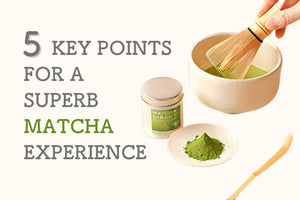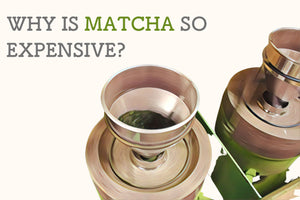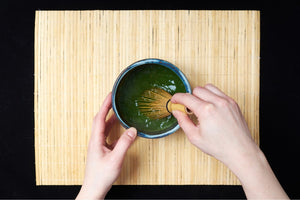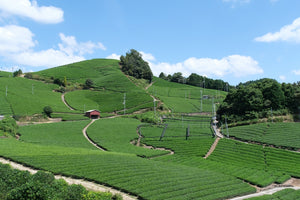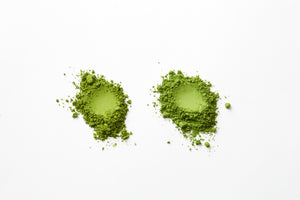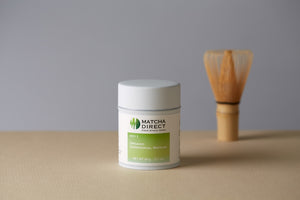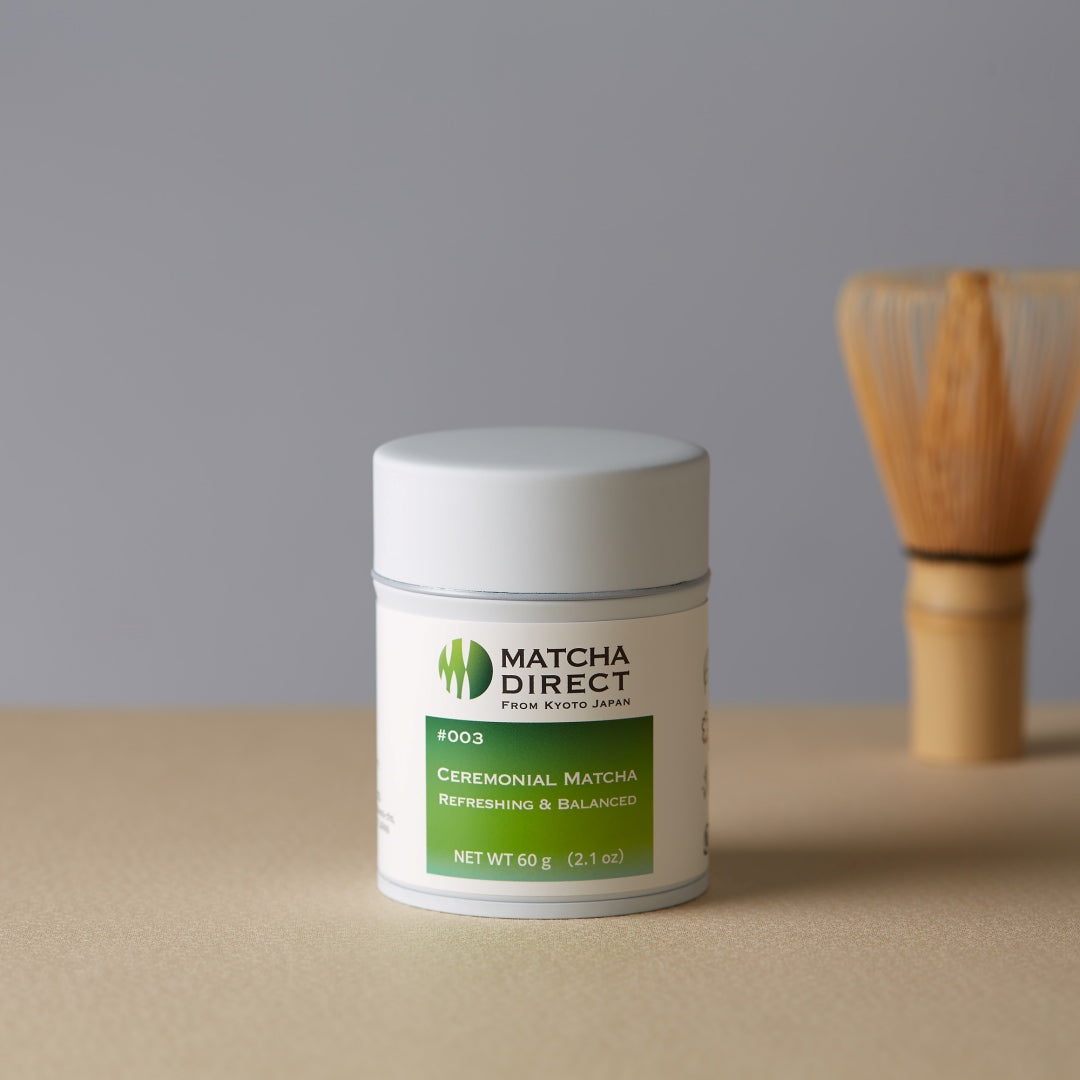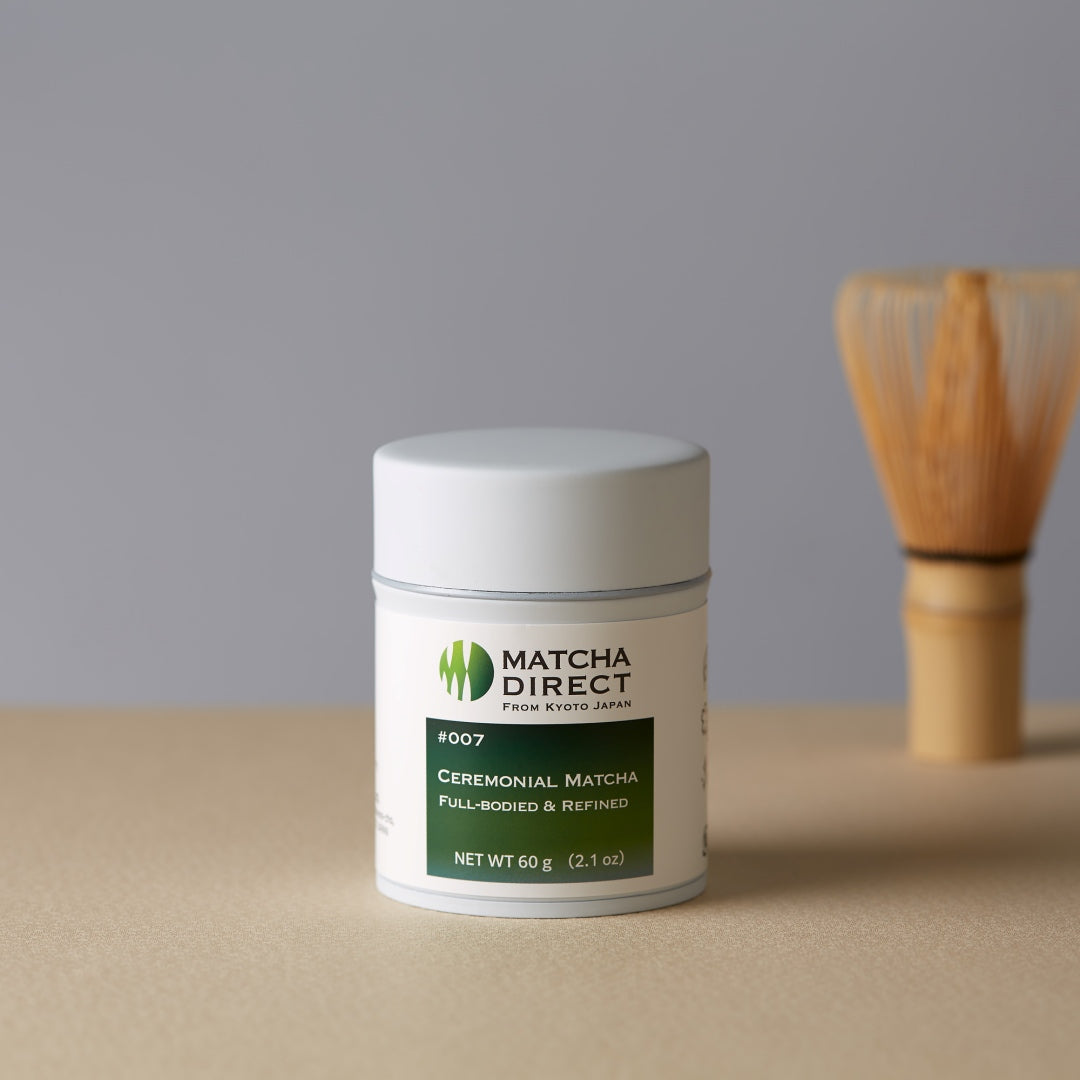Matcha Definition: What does Matcha Mean?
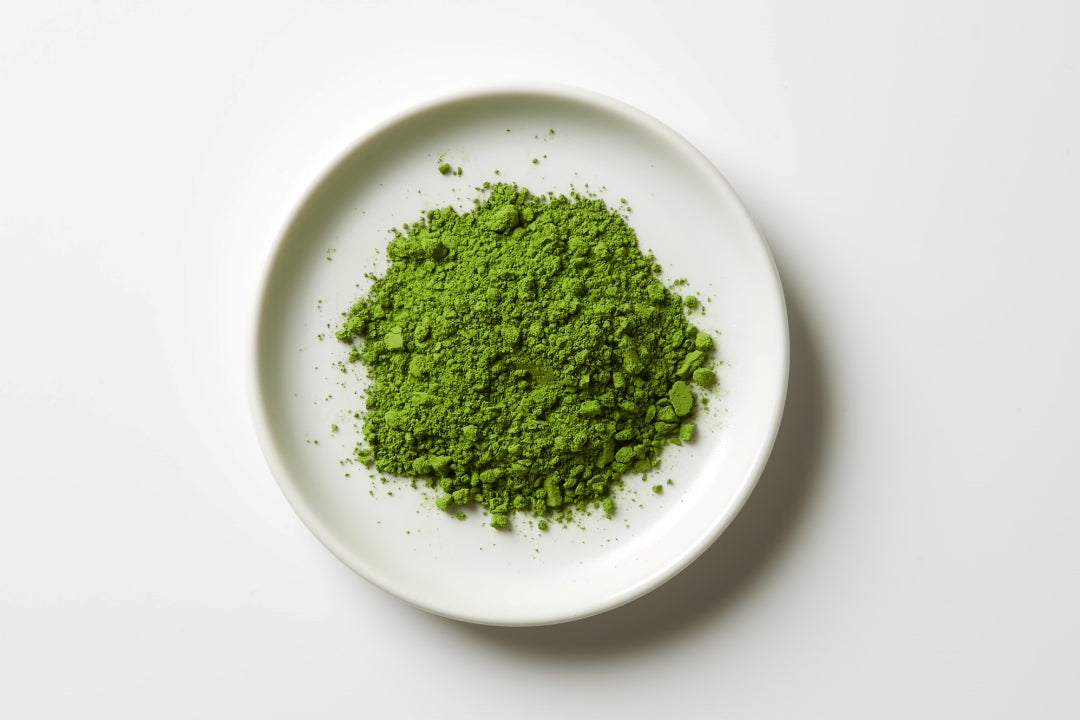
What does Matcha Mean?
What does Matcha Mean?
Probably, the general perception is that it's green tea made from finely ground tea leaves. In this article, we'll provide a more detailed explanation of what matcha is. In addition to being finely ground using a grinding machine, there are two other essential elements required to be matcha.
First, it must be made from tea leaves cultivated under shading, a process called "shaded cultivation". Second, it must be processed using a "tencha furnace". Combined with the use of a grinding machine, these three elements make up the components of matcha.
The process leading to matcha is not as simple as it seems, but for the sake of clarity, we will focus on these three elements in our explanation.
Shaded Cultivation

Shaded cultivation involves covering the tea leaves with materials such as reed screens, straw, or cold-proof gauze made from synthetic fibers for a certain period before harvest, also known as "covered cultivation."
By inhibiting photosynthesis, the leaves produce more chlorophyll, promoting their photosynthesis. As a result, the harvested tea leaves have a vibrant green color due to the increased chlorophyll and are rich in theanine, the source of the "umami" taste characteristic of matcha.
The vibrant green color and the umami taste derived from theanine are features of matcha, which are produced through shaded cultivation.
Other types of shaded tea include gyokuro and kabusecha, but for the tea leaves used as matcha's raw material, a higher shading rate and a covering period of more than 20 days are used.
Tencha Furnace

The tencha furnace is a facility for drying tea leaves to create tencha, the intermediate raw material for matcha, and is exclusive to the matcha manufacturing process. In the drying process for sencha raw tea leaves, they are passed through a twisting machine similar to the one used for black tea, but it is not applied to matcha production.
Traditional tencha furnaces are brick-built and use radiant heat. (However, advancements in modern technology have expanded the materials and manufacturing methods, so they are not always brick-built.)
In the tencha furnace, the temperature is raised to about 200℃ (around 400℉), creating a unique flavor due to the far-infrared radiation. The tea leaves are dried by moving through the furnace in lower, upper, and middle sections for about 20 minutes using a belt conveyor.
Grinding Machine
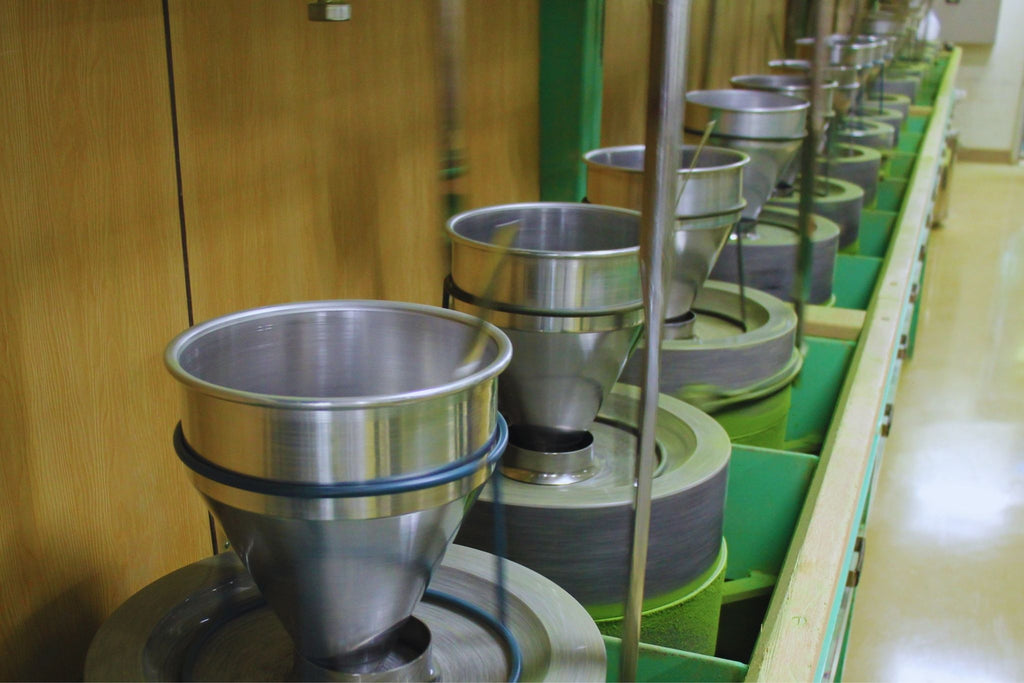
The traditional method of producing matcha involves grinding the dried tencha using a stone mill. According to various analyses, the average particle size of matcha ground with a stone mill is usually below 10 microns.
Traditionally, stone mills have been used, and some manufacturers still adhere to this traditional method. However, standard stone mills can only grind about 40g of matcha per hour. Moreover, each stone mill has unique characteristics, making it disadvantageous for quality standardization compared to machine grinding. For these reasons, most matcha today is ground using machines, with ball mills and bead mills being typical examples. Recently, machines utilizing compressed air, like jet mills, have also become popular.
In general, stone mills can grind more finely. Machines can also achieve fine grinding, but as it takes more time, they usually compromise on fineness to maximize manufacturing efficiency. However, it is uncommon for the average particle size to exceed 20µm.
There isn't a significant quality difference between matcha ground using a stone mill and a machine, as long as the same tea leaves are used. However, stone mills produce a finer grind, resulting in a smoother texture and finer foam when whisked with a chasen (tea whisk).
Color differences should also be noted. When the same material is ground, the finer particles appear whiter due to the effect of scattered light. It is essential not to misjudge the quality of matcha based on a whiter color alone.
In conclusion, matcha is a unique type of green tea made from cultivated under shading, processed using a tencha furnace and finely ground tea leaves. While the process may be more complex than it initially seems, understanding these three main components helps to better appreciate the characteristics and qualities of matcha.
Matcha Definition: Broadly-defined Matcha and Narrowly-defined Matcha
Non-shade-grown Matcha
Tea leaves harvested for the first time in a year are called first flush, followed by second flush, and third flush. The number of harvests varies depending on the region. In Uji area, Kyoto, which is known for its matcha production, it is common to classify tea leaves into first flush, second flush, and autumnal flush.
During winter, the roots store nutrients, resulting in a significant amount of theanine in the first flush. The theanine concentration decreases in subsequent flushes. Furthermore, tea leaves cultivated for matcha contain relatively higher amounts of theanine compared to those not grown for matcha. This is due to the shading process that suppresses the transformation of theanine into catechins before harvesting.
In Uji area, Kyoto, it is generally not common to use shading for autumnal flush tea leaves. In addition to the shading becoming less effective during this time, the potential damage to tea plants and the impact on the following year's first flush are considered, making it standard not to use shading.
Non-Tencha Furnace Matcha (Moga-cha)
Tencha is produced using a tencha furnace. However, in tea farms without a tencha furnace, there has been an increase in cases where tea leaves are supplied as tencha using sencha production equipment. This is called "simplified tencha" or "moga-cha." While tencha is easily separated from its stems, moga-cha has slightly twisted stems, making separation difficult, resulting in a stronger taste.
During World War II, matcha was recommended for efficient caffeine consumption, but existing tencha furnaces couldn't keep up, leading to the use of sencha production equipment and the beginning of moga-cha. Moga-cha production declined for some time but has recently revived due to the growing demand for matcha.
"Moga-cha" falls under the broadly-defined matcha category, but some manufacturers argue that it does not comply with traditional matcha production techniques.
What is the Definition of Matcha?
Based on the explanations so far, matcha can be classified according to harvest time and tencha furnace usage.

Matcha Classifications
Broadly-defined matcha includes all six variations as matcha. However, some groups argue that "if it's not made using a tencha furnace, it's not matcha."
Moga-cha is the same tea leaf when considering cultivation and has no significant differences in essential qualities, such as theanine content. The main difference is that moga-cha retains more stems, resulting in a slightly stronger taste. Additionally, since moga-cha involves kneading the tea leaves, the risk of microbial contamination is higher than with tencha.
The same applies to autumnal flush tea. There is an argument that "since it's not shade-grown, it's not matcha."
Indeed, the existence of autumnal moga-cha, which does not use a tencha furnace and shading, is a somewhat ambiguous position (the bottom-right classification in the table), and it's not entirely unreasonable to argue that it shouldn't be considered matcha. However, without autumnal moga-cha, it is highly likely that the vast demand for matcha in Japan would not be met. These matcha varieties are used as industrial ingredients for matcha confections and matcha ice cream.
From a conservative perspective, narrowly-defined matcha only includes first and second flush tencha, as seen in the table.
Regarding the grinding method, there is no argument that if it is not ground with a stone mill, it is not matcha. Both machine-ground and stone-ground matcha are accepted.
Matcha handled by Matcha Direct

At Matcha Direct, we only handle the top-left category in the table, which is first flush tencha. First flush tencha, with its abundant umami and minimal bitterness, is ideal for direct consumption and enhances the inherent goodness of matcha in other applications.
Moreover, we only offer stone-ground matcha, not machine-ground. One reason for this is that stone-ground matcha produces better froth when whisked with a chasen, covering a wider range of uses. Additionally, as we provide Ground-To-Order matcha, machine grinding is not practical for large-scale production, making stone grinding more suitable from a supply chain perspective.
We deliver the highest quality matcha in freshly ground, top condition with no degradation, straight to our customers.


